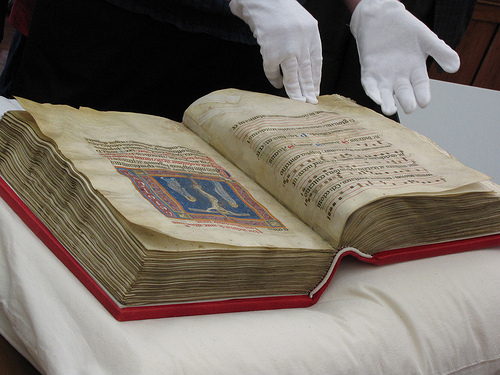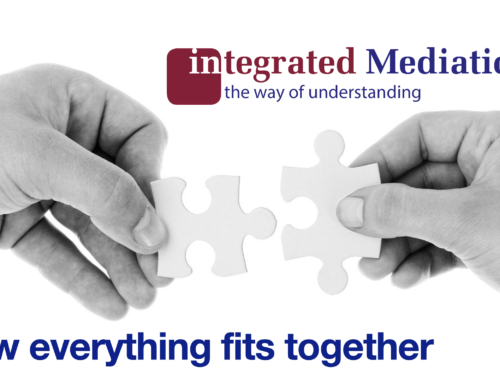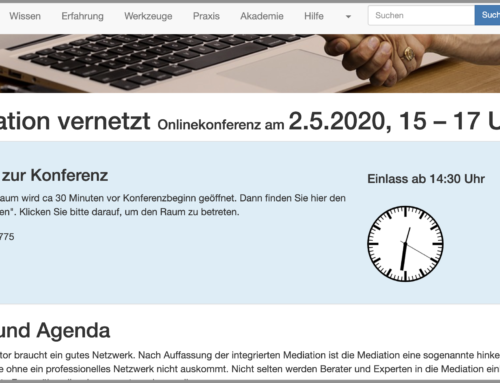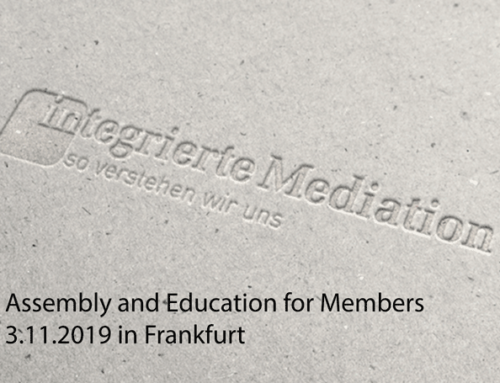The IM-Code Mediation and integrated Mediation
These standards are the basic principles that all mediators and trainers in IM adhere to.. The basis for this is the code of conduct for mediators, that the Association of Integrated Mediation took an active part in putting together, EU Directive 2008/52/EC of 21. May 2008, the DFfM Standards that the associations in Germany agreed to and the Association of Integrated Mediation agreed to adhere to and, of course , the applicable national law in each country. To make the following an easier read, the traditional masculine form will be used but it is extremely important to note that this form is not gender specific. The term ‘Mediator“ applies to both male and female mediators and the same is true for the plural form.
Integrated mediation sees itself as a procedure that helps parties in conflict to reach a consensus by themselves. Integrated mediation uses various techniques, styles and forms which are also used in mediation. Mediation should be seen, first and foremost, as an independent way of resolving conflict (Standards of Mediation). It is also a psychological process of awareness that presents itself as the meta-level for other forms and procedures of conflict resolution and is to be used as such by experienced mediators (extended standards of integrated mediation).
Standards of Mediation
Terms of Engagement
The parties decide the terms of engagement of the mediator. The mediator ensures that all decisions are made in view of these terms by way of agreement or assent.
Self-determination
The Mediator supports the parties who come up with their own solution to their conflict
Transparency
The mediator ensures that all details of the process are made very clear and that the parties are at complete liberty to inform themselves regarding the process and where it is heading. He explains the procedure to the parties mentioning all possible types of mediation. He also points out possible alternatives and the meaning of the decisions that are to be made during the process. He also ensures that all relevant details pertaining to the areas of conflict are out in the open and communicated to all parties. and that all participants are bound by this transparency. (principles of informed consent).
Autonomy
The mediator ensures that each party makes its own decision at each stage throughout the process and with regard to the results of the process which assumes all parties receive the same information. Conditions favourable to having the autonomy to makes one’s own decisions should be put into place whenever necessary..
Independence and Neutrality
The mediator is not bound by instructions given by the parties. He refrains from any action which puts into question his neutrality. If a mediator has or has had a personal or business contact with one or both of the parties, then he is to declare that of his own accord.. He behaves impartially and has no personal interest in a particular outcome..
Confidentiality
The mediator keeps any information that is divulged in a mediation to himself He is bound to maintain confidentiality and therefore is not able to testify at a trial if it is information he heard during the course of a mediation. (exclusion of evidence), unless legally bound to do so. He instructs the parties as to the limits of confidentiality and includes this into the confidentiality agreement. The participants in this alliance try, wherever possible, not to ask the mediator to break his promise of confidentiality.
Voluntariness
The mediator ensures voluntariness . He allows every party to call off the mediation at any time without giving reason. Contracts that force parties to a mediation to be present are not allowed. In their agreement the parties lay down how the information so far divulged should be handled as well as the results agreed upon thus far.
No influence on the content
The mediator refrains from influencing the content and especially avoids individually advising the parties or deciding the outcome. Giving parties professional advice is allowed provided that the mediator is not advising the individual party.
Extended Standards of IM
The following basic principles do not apply if the parties have opted for a ‘classic’ mediation . In all other cases and procedures the standards of mediation apply with the following deviations :
Meta-procedures
With the understanding that mediation describes all necessary steps towards awareness for the parties in conflict and the call to come to a consensual agreement, integrated mediation overlaps,can be used in combination or in parallel with other procedures. In line with the basic idea that the solution to the conflict lies within the parties themselves and assuming there is enough transparency relating to relevant facts then the process can lead over into a ‘classic’ mediation’. Looking at it this way, integrated mediation can be conducted like a meta-process. This form of integration goes much further than simply using mediative techniques. It calls for and enables the use of all the elements and competences of mediation. Integrated mediation describes how one mediates before, around and after a classic mediation. It includes classic mediation as one of the procedural options and the aim is always to lead the process into a classic mediation.
Basic procedures
The basic principles of mediation that the integrated mediator uses can be subject to certain limits of the chosen procedure. In this case mediation is a process of awareness which is used as a hybrid procedure. If the basic procedure does not create enough leeway to reach a consensus and it is not possible to provide the strategy, structure, principles and attitude needed to carry out a mediation , then an integrated mediation should not be offered or attempted.
Limited Influence
If an integrated mediator** plays a decision-making role (judge or expert) but is also an advisor then he should make it clear which role he is playing at any given time in the procedure. He will also, if need be, create a certain framework for informal communication.
Limited Assurance of Confidentiality
The integrated mediator is open as to what extent he can maintain confidentiality . He respects the parties’ decision whether and to what extent they might be willing to reveal themselves knowing what the consequences might be. .
Neutrality
In situations where the integrated mediator is to act as a representative for one of the parties he is to make sure that he has a clear mandate to reach an agreement acceptable to both his client and the other party to the conflict. However, it is expressly forbidden for him to advise one party in particular.
Professionalism
The mediator** is trained to mediate professionally in all fields.. To ensure the quality of his work, the mediator goes through the results with the parties. He also gains practical experience through supervision ,inter or Co-vision and doing further training..
Standards for Training
To become an IM mediator, one has to do a mediation course. An IM Mediator meets all the requirements and has all the skills needed to carry out a classic mediation. Therefore, to carry out an integrated mediation, an all-encompassing mediation course is the minimum requirement. This and the fact that integrated mediation includes mediation, is why the content of the course to qualify as a mediator, which has been agreed upon by all associations, is also the basis of the course to qualify as an integrated mediator.
A. Contents of training
I. Introduction and basis of mediation (Weighting: 15 %)
Definitions
Fundamentals of mediation
- Overview of the principles, procedural steps and phases of mediation
- Overview of communication and work-techniques in mediation
- Distinguishing mediation, litigious procedures and other methods of conflict resolution
- Overview of areas in which mediation is used
II. Procedure and framework needed to carry out a mediation (weighting: 25 %)
Detailed explanation of the phases in mediation
- Mediation contract
- Identifying themes
- Exploring interests
- Gathering and evaluating options
- Final agreement
- The various possible settings for a mediation
- Individual conversations
- Co-/Team mediation, multiparty mediation, Shuttle-Mediation
- Including third parties for e.g.. children, tax consultants, experts)
Other conditions necessary
- Work done in preparation and after a mediation
- Documentation/ Minutes
III. Negotiation techniques and competence weighting: 10 %
- Basis of negotiation analysis
- Conducting and managing negotiations: intuitive negotiation, negotiation according to the Harvard Concept/negotiation techniques, distributive negotiation techniques
IV. Conducting conversations, communication techniques weighting: 15 %
- Basics of communication
- Techniques of communication: active listening, paraphrasing, questioning techniques, verbalising, reframing, verbal and nonverbal communication
- Techniques for finding and evaluating solutions (brainstorming, mindmapping, other creative techniques, risk analysis)
- Visualising and moderation techniques
- How to deal with difficult situations(for e.g. impasses, resistance, escalation, imbalance of power)
V. Conflict competence Weighting: 10 %
- Conflict theories (conflict factors, conflict dynamic and analysis; levels of escalation, types of conflict)
- Recognising conflict dynamics
- Intervention techniques
VI. Law relating to mediation Weighting: 5 %
- Legal environment: mediation contracts, confidentiality-, remuneration, responsibility and insurance
- incorporation into the code governing the original profession
- Basic features of the law on legal services
VII. Law in mediation, The possibility of making a legally informed decision where there are legally relevant facts, Weighting: 10 %
- the role of law in mediation
- the mediator distinguishes admissible legal information from inadmissible legal advice
- defining the respective roles of the mediator and the parties’ counsel
- in legally relevant cases, the mediator should recommend the parties to seek external legal advice – lawyers taking part in the mediation,the legal implications of a mediator working to produce the final agreement ,final agreement.
VIII. Personal competence, attitude and understanding of roles weighting: 10 %)
- Definition of roles, conflict of roles
- Mediator’s task and self-understanding
- Mediation as an attitude , especially validating, respect and inner attitude
- Impartiality, neutralitity and maintaining professional distance from the parties and the conflict
- Power and fairness in mediation
- Dealing with one’s feelings
- Self-reflection
- Networking
IX. Practice and supervision / Intervision during the course, Role plays with feedback and analysis
- Information about the importance of supervision
B. IM-Extension
In order to use mediation in a context other than a classic mediation or to be able to mediate in conditions which are not clear-cut or are even hostile, there is need for a deep understanding of what lies behind mediation and the process of awareness that it describes. Since integrated mediation reaches the outer limits of mediation, the integrated mediator needs to be completely aware of his personal skills as a mediator. In order to achieve this , integrated mediation complements the earlier explained general training standards in the following way:
I. Introduction and basis of integrated mediation, Studying the basis of mediation further
- Definition of integrated mediation, setting down limits, history of integrated mediation
- Areas where it is used and possibilities
II. Positioning and importance of integrated mediation as a process
- The functional importance of the process, systematic classification, an in -depth look at the overview of the process, discovering the pattern of communication)
- The strategic importance of the process and its connection to the conflict dynamic, game theory, wider conflict evolution
- Interfaces, procedural overlap, combinations
- The relationship between the procedure and the service, the mandate to conduct the procedure
- The possibility of confrontation turning into cooperation
- Mediation as a psychological process of awareness
- The meta-procedure
III. Extended framework and steps
- Overview of all procedures and styles of mediation, also in an international context
- Origin, importance, limits and ensuring the principles
- Strategic, psychological, legal sociological background to the phases
- The logic of the phases, Phase-patchwork
- Methodology of mediation
- Agreements and assurances in an integrated mediation
- agreeing and setting down shared aims
- Mediation as Quality management (hypotheses, origin of the phases)
- The importance of the phases before and after a mediation
III Extended conflict competence
- The connection between conflict and procedure
- The interaction of conflict theories and their systematic resolution
- conflict dimensions
III. Extended call for competence and attitude
- Thought processes in mediation
- Role accumulation and role clarity, the solution pentagram
IV. Particularities and phenomena
- The written procedure process
- The bidirectional combination of procedures
- Formal, informal communication, creation of communication areas, bottleneck phenomena
V. Areas
- Specialised mediations mediation in all areas
- The various procedures(even internationally)
- Legal basics included in international law
- Intercultural communication
VI. Models
- For example cooperative practices
- Cochemer Practice,
- Altenkirchen Model, Koblenz Practice,
- ”Konfliktlotsen'(a form of mediation practiced in schools),points of contact, etc
C. Requirements for the certification of IM-Mediators
IM-Mediators are certified through accredited institutes. In order to deal with the difference in quality of the training courses and the different requirements even internationally IM has adopted a concept of levels whereby an IM-Mediator can reach a three star grade.
1 Star Mediator
The one star mediator (Mediator* for short) is a first-level mediator . This title meets the requirements of the law on mediation in Germany and takes into account the level of training in other countries the Mediator* has a general knowledge of mediation. He knows when mediation is to be used and its limits and is capable of conducting a. mediation on ‘safe ground.
Conditions
In order to do a course to qualify as a mediator, one has to have a degree in tertiary education , professional training or have several years work experience .Exceptions can be made in individual cases if proof of suitability is presented .
Training:
The training course goes from imparting theoretical knowledge to practical experience. It is designed to give future mediators the opportunity to turn what they have learned into a form of expression which fits their personality. The didactic concept consists of attending lectures, possibly distance learning, peer groups, accompanied Inter- and Supervision. The interdisciplinary nature of the course is ensured by a fully qualified trainer or trainers. Great care is taken to ensure that the course is coherent .The trainers , liaise, talking through how the trainings are going and which materials are being used.
The course is divided into several models. The module can be offered as independent parts of the course although their relation to the curriculum and to the other parts that need to be covered in order to receive the full qualification, must be explained. The training must be carried out or be done together with at least one Mediator***/ (a ‘trainer-trainer’).
The basic training course to qualify as a mediator is at least 120 hours. The training course can be tailored to meet the needs of other countries (e.g. Latvia) , but must never consist of less than 70 hours.
In the case of a long distance course, the classroom attendance must be at least 80 hours The long distance course must conform to one of these justified didactic concepts. Wherever possible, the classroom attendance should be organised in such a way that there is time to work and reflect on what has been learnt before and after every session.
Certification:
After completing the course described above, one is a certified Mediator* . Completion of the course includes handing in the written documentation of a case that one has mediated or co-mediated. The documentation should include an explanation of the case and how the mediation was conducted, the intervention techniques the mediator used and the effect they had as well as self-reflection. The documentation should also be part of an oral examination although self-reflection plays a very important role here too. The oral exam can be replaced by a written or a long-distance oral exam, provided that the examiner knows the participant and the way he works well enough. The mediators- to – be sign a declaration that they will abide by IM-Standards, provide the necessary details for the purposes of statistics as well as a declaration that they will do a re-certification. If the course was done more than 5 years earlier, then the candidate must hand in at least 2 documented mediations or proof of 50 hours of further theoretical training.
2 Star Mediator
The Mediator** (2 Star Mediator / . Level 2) has detailed knowledge of mediation even in certain specialised areas. He is a fully -qualified professional. He also has the knowledge and skills to conduct an integrated mediation. He able to conduct a mediation in difficult or atypical circumstances and to mediate in other contexts.
Conditions:
The training as a 2 Star mediator requires at least 120 hours more than that of the 1 Star mediator. This training should deal with mediation from the thematic and practical angle of mediation in particular areas. The training guidelines qualify as a mediator* training with the following particularities:
Training:
The rules of the Mediator* training apply. Together with the training course to qualify as a Mediator* the Mediator** has gone through at least 240-hour training course, 40 of which are supervision.
Certification
The Mediator**- to be already has a Mediator* Certificate or the equivalent. To qualify as a Mediator** candidates must hand in two written documentations of cases they have mediated or co-mediated. If the candidate is a certified Mediator* then one documented case is enough. In addition, a dissertation on a mediation topic shall be submitted. The regulations for the Mediator*.exam apply
3 Star Mediator (Trainer-Trainer)
The 3 Star mediator Level 3 ) is qualified to be a trainer. He has detailed knowledge of all forms of conflict resolution, especially mediation and integrated mediation in all areas. He not only has experience with all forms and styles of mediation but can also bring that experience to the training course and has knowledge of the didactics of mediation.
Conditions:
Every applicant must show proof of having done the 2 Star mediator course or the equivalent. In addition, he shall submit 25 cases he documented himself and proof that he has taught for at least 250 hours.
Futhermore, he can justify having done an IM course including a trainer’s qualification and knowledge of integrated mediationand the contents of the course. He also has experience in and through supervision and has refelected on his own and other concepts of mediationand ways of proceedingin the understanding of integrated mediation.
Training:
A ToT (Training of Trainers) course is desirable. It includes at least 25 hours of didactic training , relevant teaching and training techniques, explaining components of the integrated mediation courseand certain problems concerning the mediation course and studying the script.
Certification:
To be a certified 3-Star mediator the following documents must be submitted (2 Star mediator certificate or the equivalent 25 documented cases, proof of at least 250 hours of training,certification of having conducted a ToT ). training. The applicant can prove that he has understood the idea of integrated mediation and the contents of the course by
a) submission of a dissertation on integrated mediation
b) Alternative and desired sitting -in as Co-Trainer on an IM training course approved by the board
The applicant has done an IM ToT training course. The ToT training course can be replaced by an internship as trainer or by submitting an in-depth dissertation on mediation didactics. .
It is necessary to present a reasoned and commented training concept . It should explain the content and didactics of the training one is planning to do or outline concrete ideas as to how the IM training concept presented is to be put into practice. The results of the self-reflection should also be put down in writing and handed in.
Finally, a declaration of submission to the standards and training guidelines of Integrated Mediation should be handed in. Proof of having conducted a ToT training can be replaced by an in-depth dissertation on mediation didactic
D. Requirements for certification in special cases
In the above-mentioned process of certification, it is assumed that an IM-specific course has been attended. However, it is also possible to certify mediators who have not done an IM-accredited course. In these cases, ‘Star’ certificates can be awarded when proof that the course is the equivalent of the appropriate ‘Star’ course To ensure that the IM philosophy has been understood, one can do a 24 hour training module ‘integrated mediation’ or prove one has studied the IM scriptures. This added proof can be given through an interview or a written paper
In cases where mediators were certified by an IM approved institute before these standards came into force, it suffices to submit a declaration to abide by these standards , to the extent that this is necessary.
Special rules apply to allow certification of particularly knowledgeable and/or experienced individuals. It is up to the certification branch to decide in every individual case if the conditions for certifications can be met in another way.
E. Recertification, Revocation and Repeal
IM assumes that Star-mediators put their knowledge and experience into practice, therefore recertification at regular intervals is not deemed necessary. Every Star-mediator must however agree, if asked, to submit documentation of practical experience in 2 cases within 5 years or proof of attendance at a further training course of at least 50 hours. Refusal to do this within the period of time agreed upon will result in loss of the ‘star’.
F. The IM Accreditation and Certification Procedure
The guidelines set the standards for mediation training and practice by IM Mediators. On the one hand, they provide for a common understanding of mediation and on the other hand, provide for a specification of mediation in light of integrated mediation which requires a wider and deeper knowledge of mediation. IM ensures this standard of quality through accreditation, certification, coordination and administration.
Accreditation
IM itself does not conduct courses or mediations. The training is carried out by affiliated and legitimately accredited institutes. They are authorised to issue IM Star certificates when the necessary conditions have been met
Conditions for Accreditation:
For an institute to be affiliated to IM the following conditions must be met:
- a detailed curriculum should be available, wherein the contents of a mediation and integrated mediation course are fully and correctly provided for .
- The curriculum should outline a didactic concept, demonstrating how the contents can be brought across in practice.
- The way the training is carried out should show how the knowledge and skills gained will result in the trainees’ competence (section on supervision, peer groups, support).
- Consistency of training needs to be ensured whereby trainers and course material are compatible.
- A Mediator*** is responsible for the training.
- The other trainers will put their practical experience and theoretical knowledge to use appropriately.
- The institute uses training materials (scripts, Videos etc.) approved by IM.
- The institute is bound to uphold standards . It allows IM representatives to sit in and is bound to issue certificates in the IM format .
- The institute also ensures that training statistics are submitted by 31.12. of any given year. These statistics should show the number of participants and how many completed the courses .
- The institute is bound to register every course before it starts and to submit the documents for authorisation If the courses are held at regular intervals this need only be done once.
Accreditation approval
Institutes in Germany are accredited either when the documents submitted have been checked and the institute visited, or there has been an interview and an institute contract has been drawn up. The IM-Trainings Committee is in charge of this. Accreditation can be limited to offering Mediator* or Mediator** training courses and can be offered together or separately.. Accreditation of institutes abroad and the accreditation of trainers training centres and Mediator***-certificates is done by the board following a hearing of the trainings committee.
Revocation of Accreditation
The board can revoke accreditation for serious reasons, especially for not complying with the standards. The accredited training institute is given time to defend its position beforehand.
Certification
The accredited institute is authorised to issue Mediator* and Mediator** certificates to participants who have completed their studies if they attended the course in the country of the institute’s headquarters and if all conditions have been fulfilled. If more than one institute was involved in the training , one will be chosen as the main one and will be responsible for certification. If training takes place abroad, then the board also has to approve it if it is being carried out by an accredited institute. Certifications abroad are done through the board . In all other cases certification is dealt with by the trainings committee.
Coordination
The IM-trainings committee is an organ of the IM organisation. The committee work with all departments in the association and should be informed and included in all IM’s measures related to training or practice of mediation. Inversely, the committee keeps all departments informed about the relevant needs and requirements for the trainings. There is an exchange between the IM departments whose aim is to ensure the development and realization of the standards.
Administration
IM provides the necessary administration to ensure that standards are maintained. The IM-administration keeps a database, where all certificates that have been issued are registered as well as the statistics related to trainings and mediations carried out ,are held.
- The data regarding the trainings that is recorded is : name and occupation of graduate, number of stars and date of issue of certificate. In addition, the number of applicants on the course, how many dropped out and the reason why
- The data regarding mediations carried out: name mediator’s name, number of mediations carried out, type and area of mediation, outcome of the mediation.
All data, with the exception of the register of certificates, serves statistical purposes and is forwarded anonymously. The is data processed centrally by the IM-offices(this also includes the overseas associations connected to IM) .
IM ensures that it is possible for the trainings committee to remain in contact with the associations’ departments and the sister associations abroad.
The IM-Trainings committee The IM-trainings committeeis responsible for accreditation and certification. The committee is also responsible for overseeing and developing the training standards.
The committee is composed as follows: It shall be chaired by the person elected by the members at the Annual General Meeting or the head of the trainings department. A board member chosen by the board has a seat on the committee. If a board member is not selected, then the head of the association occupies the seat. Up to five other members are called on by the board A representative of every institute, although only three institute representatives have the right to vote. When more than 3 institutes are involved, it is decided by luck of the draw. The other votes and seats are given to the delegated representatives of the foreign associations.
The committee meetings are public. The committee members are to be invited. The invitations can be sent electronically. and meetings should be sent early enough so that the representatives of institutes that have no vote, every IM member and guests can take part.. The committee meetings take place as needed, at least once a year. Decisions regarding certificates can be communicated by email. The committee can ask for fees for certification which must be approved by the board. Fees must follow the principle of equivalence and cover the costs. The committee members are chosen every two years. The committee gives itself standing orders whereby the number of members, the voting procedure, the delivery of conclusions and the way of the meetings are conducted might be determined.
In the cases where certificates were issued before the current standards were in place, the chairman’s ex-post approval shall suffice.
Disputes are decided by the board after hearing all those affected and involved in a mediative procedure.
The IM-Offices
The office shall report to the board.
Approved at the Annual General Meeting in Altenkirchen on 31.3.2012
Drawn up by the chairman,
Altenkirchen, on 31.3.2012
Arthur Trossen
2011
Arthur Trossen, Ralf Käppele, Iris Berger
here represented by the chairman
Translated by Louise Schmitz






Leave A Comment
You must be logged in to post a comment.